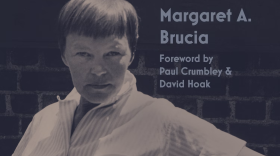-
We revisit our conversation from November 2013 with Val Holley about his book "25th Street Confidential."
-
We talk with Margaret Brucia, author of "The Key to Everything: May Swenson, A Writer’s Life." May Swenson was one of the most important and original poets of the twentieth century.
-
The Golden Spike State Monument is coming to Brigham City in 2026 to honor the workers who built the transcontinental railroad. The new state park is expected to open in fall 2026.
-
From phonetics to history, in his book Utahisms, BYU Linguistics Professor David Eddington reveals the roots of what is truly, uniquely Utah. We revisit our conversation from February 2023
-
A historic landmark, the restaurant will reopen this fall after years of extensive renovations. The updates preserve its classic charm while adding modern touches to enhance the dining experience.
-
Brigham City’s story began in 1854 when 50 pioneer families in Salt Lake committed to build a new city based on the co-operative movement.
-
Some of the money will be used to convert upper levels of historic business buildings into housing options.
-
Early this spring, a semi-truck with a long flat bed pulled into the USU parking lot next to the cemetery and parked. Lashed down firmly on the flat bed was a giant railroad spike, covered in gold leaf and very impressive to see from a distance.
-
In other news, a $466 million construction project is aiming to ease traffic in Utah County. And, a statue of Utah's first female state senator is heading to Washington, D.C. to represent Utah inside the National Statuary Hall.
-
Corinne — often referred to as the first “Gentile city” in Utah — was one of the first settlements in the state founded by people not members of the Church of Jesus Christ of Latter-day Saints.

Play Live Radio
Next Up:
0:00
0:00
Available On Air Stations










